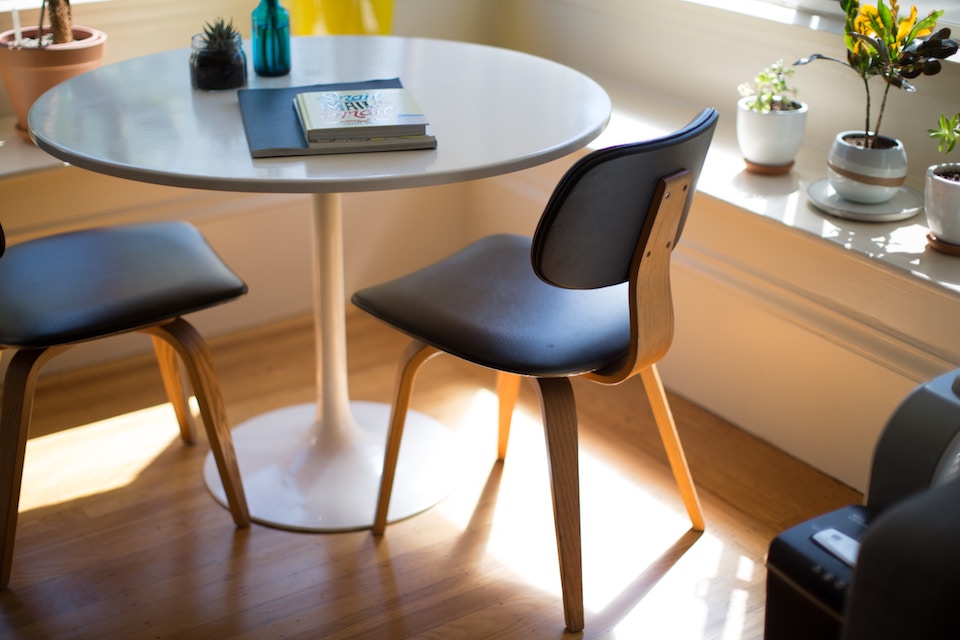Talking with Roni Frank co-founder of Talkspace
Meet Roni Frank, the inspiring entrepreneur behind Talkspace, who is changing the conversation around mental health and online therapy.
You launched Talkspace while pursuing your Masters Degree in psychoanalysis and psychotherapy. What inspired you?
It was the convergence of two things. First, my graduate studies in psychology exposed me to disgraceful statistics about the state of mental health care in America, and presumably around the world. For instance, one in five people have a diagnosed mental health issue, but only 30% have access to therapy. This disparity caught my attention, and I immediately felt compelled to be a part of the solution to this problem.

Believe it or not, the second catalyst was my growing frustration with social media. This was seven or eight years ago, right when social networking platforms like Facebook and Instagram really began taking off. I realized that when I would spend time on social media, I felt the constant impulse to compare myself to other people, all of who seemed happier than I was. I knew it was fake, and that everyone was performing, and that made me crave a platform where people could be real, where they could talk about what their lives really looked like.
My desire to see an interactive platform to express one’s authentic self—plus my interest in mental health care—led to Talkspace.

How was “traditional” therapy not meeting our needs?
Traditional therapy is incredibly useful, but it’s expensive, stigmatized, and often inaccessible because of the time commitment it requires.
From my studies, I knew that 70 percent of people diagnosed with mental health issues weren’t getting treatment. Others may not even have had access to an initial diagnosis, either because of stigma or money. The bottom line was the lack of available, accessible, convenient and affordable treatment.
Traditional therapy is incredibly useful, but it’s expensive, stigmatized, and often inaccessible because of the time commitment it requires. The goal of Talkspace was to address these barriers and provide a more convenient and affordable alternative.
How does Talkspace work?
In 2011, the first service we offered was group video therapy: a scheduled video chat to happen synchronously (in real time) between a therapist and four or five people, who could split the cost of a single session. After we launched, nothing happened for a few months. People simply weren’t interested in purchasing group video sessions.

Our “Aha!” moment happened by chance. At the time, our website had a landing page with a grid of available therapists, each with a photo and bio. At the bottom of the page, we had a button for Customer Support, which we eventually realized users were interpreting as “clinical support.” Since we were so small, I was the person checking Customer Support emails. Even though we weren’t selling sessions, we were getting emails with notes about their personal problems, anxieties, and questions. Our main takeaway was that people wanted to be able to vent privately, on their own time.
How did you change the app based on this input?
We also learned that communication didn’t have to happen in real time—as long as people could vent on their own time.
Those emails inspired us to adapt our offerings. People were clearly finding value in venting about their problems in writing, rather than having to schedule a video session. We realized that messaging therapy could be part of therapy’s future: after all, texting, email and other forms of written messages were the way people communicated at work, with family, and with friends. Therapy could be the same.
We started with one user. Today, more than half a million people have used Talkspace to connect with a therapist
From those emails, we also learned that communication didn’t have to happen in real time—as long as people could vent on their own time. We also assumed that people wanted privacy, since the group sessions weren’t catching on. All of these inferences led us to start from scratch, to build a new platform—Unlimited Messaging Therapy™—the modality we offer today.
We started with one user. Today, more than half a million people have used Talkspace to connect with a therapist.
What topics are most commonly discussed?
Most commonly, people come to Talkspace wanting to address depression, anxiety, and relationship issues.
What does a typical session look like?
A typical Talkspace “session” takes place over the course of five days. Since therapists are expected to respond to clients a minimum of twice per day, our clients and therapists average about 10 interactions per week. These interactions can be thought of as equivalent to a traditional, 45 to 50 minute in-person therapy session. Instead of a 50-minute block, our clients interact with their therapists about 10 minutes a day, five days a week.
Now you offer three plans, Unlimited, Ultimate, and Couples Therapy. What does each involve?
Unlimited: With this plan, there is no limit to how many messages users can send to the therapist. The chat room is open when the client needs it and the therapist is committed to respond five days a week, a minimum of twice a day. Unlimited Messaging Therapy™ is not only text messaging—it also includes the option of sending audio/video messages. Users can choose the medium they prefer.
In addition, there are other Unlimited plans that allow users to schedule real-time video sessions with their therapist on top of the Unlimited messaging.
Ultimate
This plan is more like traditional therapy, as it requires clients to “meet” (via video chat) their therapist for a real-time session, once per week. The client and therapist can interact between sessions over chat.
Couples
We don’t yet have a plan that offers video sessions for couples, so the Couples Therapy plan is very similar to Unlimited Messaging. The only difference is that instead of having a room for two people, one client and one therapist, it’s a room for three people: the couple and the therapist. However, each person in the couple communicates on their own device. In that chat room, they can interact with each other directly, and with the therapist, who mediates the entire “session.”
Do you see any limitations of text/video therapy? Do you think it will replace traditional in-person therapy?
People who are already benefiting from traditional therapy and have adequate means and time to continue should do so. There’s no reason to stop traditional therapy if it’s working.
It’s always about growth for us because growth means we can help more people who are not getting the care they need.
However, most people don’t have access to traditional therapy, either due to cost, inconvenience (the amount of time it takes), and/or the stigma. The majority of people either can’t afford therapy, or are intimidated by the idea of talking about their problems in such an intimate setting. In fact, 70 percent of Talkspace clients have never been in therapy before because of these barriers. For these people, online therapy will “replace” in-person therapy because they won’t have ever had experience with traditional therapy in the first place.
What kind of feedback do you get from users? Has using the app helped them resolve issues?
We’re seeing very promising clinical outcomes. We’re a data-driven platform, and we’re constantly tracking clients’ outcomes. A study that compared the outcome of Talkspace to the stats of traditional therapy found that our clients get the same outcomes for a third of the money.
What’s next for Talkspace?
What’s next is growth. It’s always about growth for us because growth means we can help more people who are not getting the care they need. There are about one billion of people in the world suffering from mental health issues. Most people cannot access therapy or other forms of professional support. Our big mission is introducing Talkspace to new markets, in new languages, in new countries. We want to be able to open up access for every person in need all over the world.
featured photography by Nirzar Pangarkar

Kari Molvar is a beauty writer and backstage reporter who has covered everything from high-performance skincare to hands-on makeup applications. She started her career in beauty as a senior editor at Allure and has since written for Vogue, T: The New York Times Style Magazine, Harper’s Bazaar, Town & Country and the Wall Street Journal among other print and digital publications. She lives in Connecticut with her husband and two (DIY-obsessed) young daughters. Follow her @Kari_Molvar







